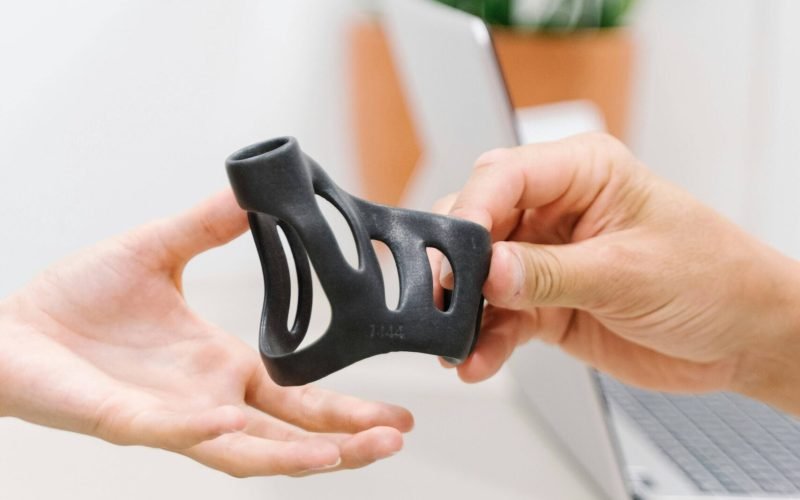Ceramic rods play an essential role in 3D printing and additive manufacturing, offering superior precision, high strength, and unparalleled material versatility. With advancements in ceramic 3D printing technologies, these rods are used in a variety of industries to create complex geometries, high-performance components, and functional prototypes. Whether in aerospace, medical, or industrial applications, ceramic rods ensure exceptional quality and durability.
Ceramic rods are increasingly used in 3D printing and additive manufacturing to produce high-performance, custom-made components across various industries. Below are the most specific and impactful applications:

Application:
Ceramic rods are used to create complex, lightweight, and high-performance aerospace components. With additive manufacturing, ceramics can be 3D printed into intricate shapes that traditional manufacturing methods can’t achieve, such as turbine blades, nozzles, and heat shields.
Example:
In turbine engines, ceramic rods are 3D printed to create heat-resistant, lightweight components that help improve fuel efficiency and reduce the weight of the overall system.
Application:
Ceramic rods are used in the 3D printing of customized medical implants and prosthetics. Materials like zirconia and alumina provide biocompatibility and durability, making them ideal for long-lasting implants such as joint replacements, dental implants, and bone reconstruction.
Example:
3D printed zirconia ceramic rods are used to create custom dental crowns and orthopedic implants that are patient-specific, offering a better fit and improving recovery times.
Application:
Ceramic rods are used for rapid prototyping in additive manufacturing. Their ability to withstand high temperatures and pressure makes them suitable for producing prototypes of industrial components that must endure extreme conditions.
Example:
In the automotive industry, ceramic rods are used to 3D print prototypes of components such as engine parts or sensors to test their functionality before mass production.
Application:
Ceramic rods with specific electrical and thermal conductive properties are used in the 3D printing of parts for electronics, power generation, and thermal management systems. These components help manage heat and ensure safe and efficient operation in electrical applications.
Example:
Ceramic rods are used in 3D printed heat sinks, resistors, capacitors, and other electronic components where heat management and electrical insulation are crucial.
Application:
Ceramic rods are used in manufacturing wear-resistant components through 3D printing. Their hardness and resistance to abrasion make them ideal for producing industrial tools, mechanical parts, and components that are exposed to high friction or harsh conditions.
Example:
3D printed ceramic rods are used to produce parts for mining equipment, where wear resistance is essential, ensuring that parts remain functional and cost-effective over time.
Ceramic rods offer numerous benefits in 3D printing and additive manufacturing, providing unique advantages that enhance the overall performance of printed components:
Ceramic materials like zirconia, alumina, and silicon carbide provide excellent mechanical strength and wear resistance, ensuring that components are long-lasting and reliable in demanding environments
Ceramic rods allow for high-precision manufacturing, enabling the creation of complex geometries and customized components that meet the specific requirements of industries such as aerospace, medical, and automotive.
Many ceramic materials offer excellent thermal and electrical insulation properties, making them ideal for applications that require heat management or electrical isolation, such as in power generation or electronics.
Ceramic rods are highly resistant to corrosion from harsh chemicals, heat, and wear, making them perfect for use in industrial environments, medical devices, and high-performance manufacturing applications.
With 3D printing, ceramic rods can be manufactured from a variety of materials, each tailored to meet the specific needs of the application. Whether for high-temperature resistance, biocompatibility, or mechanical strength, ceramics can be adapted to various industries.
Additive manufacturing with ceramic rods reduces material waste by using only the necessary amount of material for the printed component, making the process more sustainable and cost-effective compared to traditional manufacturing methods.

The most commonly used ceramics in 3D printing include zirconia, alumina, silicon nitride, and silicon carbide. These materials offer unique properties such as high strength, wear resistance, and thermal conductivity, making them suitable for a wide range of applications.
Ceramic rods enhance the performance of 3D printed parts by providing superior mechanical strength, thermal stability, and corrosion resistance, ensuring that the printed components can withstand demanding environments, such as high temperatures or exposure to chemicals.
Yes, ceramic rods can be customized in terms of size, shape, material composition, and surface finish, ensuring that they meet the specific requirements of different 3D printing applications, such as aerospace, medical, or industrial manufacturing.
Absolutely. Ceramic rods are highly suitable for rapid prototyping in additive manufacturing, offering fast production times and the ability to produce complex and accurate prototypes for industries such as automotive and aerospace.
While ceramic rods offer excellent properties, they can be more brittle than some other materials, which may limit their use in certain applications that require high impact resistance. However, with the right material selection and design, ceramics can be highly effective in many 3D printing applications.
Ready to unlock the full potential of 3D printing with ceramic rods? Contact us today to learn more about how our advanced ceramic materials can improve your manufacturing processes and provide customized solutions for your specific application.
We will get back to you within 12 hours.